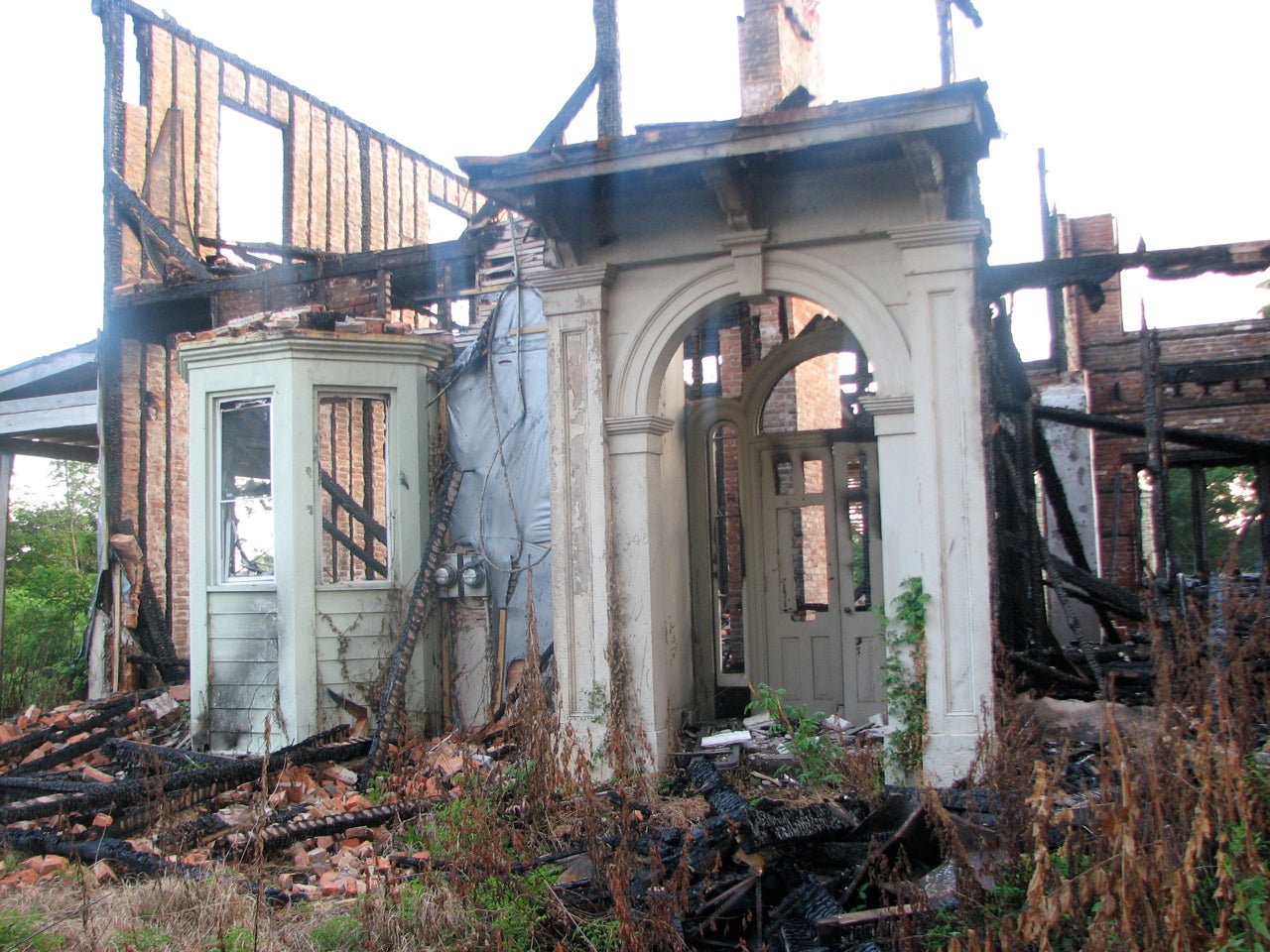Limited options for Garrett-Dunn site

Aug. 24
By Alan Jaffe
For PlanPhilly
The Garrett-Dunn House, a West Mt. Airy site with a distinguished history, has few options left for its future.
The mid-19th-century Greek Revival estate was built by that era’s foremost architect, Thomas Ustick Walter, who designed the U.S. Capitol’s dome and wings, Founders Hall at Girard College, and the Biddle estate, Andalusia. The Garrett-Dunn “cottage” was commissioned by snuff magnate George Howell Garrett, and it survived into the 21st century as one of the few remnants of the summer homes erected for the Philadelphia’s commercial aristocracy. The house and stone barn at 7048 Germantown Ave. was on the National Register of Historic Places and was placed on the Philadelphia Register in 2006.
But after decades of vacancy and neglect, the property was purchased by a developer who planned to renovate the original buildings, add new structures behind them, and create a luxury condominium complex. The tail-spinning housing market killed those plans. The owner lost his financing and stopped all work on the site in April 2008. The historic property deteriorated, until the preservation community stepped in and the property was sealed and shored up.
Then on Aug. 2, the house was struck by lighting and engulfed in flames.
The owner/developer, John Capoferri, was arrested earlier this year and is awaiting two trials in October and November on charges of theft, bad checks, intimidating a witness, terroristic threats, receiving stolen property, forgery, and obstruction – apparently all unrelated to the Garrett-Dunn debacle.
Which doesn’t leave many choices for the historic site, explained Jonathan Farnham, executive director of the Philadelphia Historical Commission.
“It’s really up to the property owner to propose something [to be done at the site] to the commission. But the owner is not really involved with it anymore. The bank that holds the mortgage is reluctant to invest anything and is looking for ways to get out from under it,” Farnham said. “I don’t think anything will happen there in the immediate future.”
Farnham called the tribulations of the Garrett-Dunn House “a very, very sad situation from a historic perspective. Even before the fire, the property was at risk, and the commission was limited in its options. The commission doesn’t have the funding to take steps in a property like that.” What could be done was done, he said, with the help of the Preservation Alliance for Greater Philadelphia and the courts.
“It is unlikely that any historical fabric can be preserved. The barn had been dismantled as part of the developer’s reconstruction, and left in that state and partially collapsed. All that remains is some of the stone walls; it has no roof structure.”
The house itself has been declared “imminently dangerous” by the Department of Licenses & Inspections, Farnham said. “It’s likely it will be demolished,” although it is unclear who would be willing to pay even for that.
Farnham said he has seen situations when historic sites have suffered catastrophic events. “But this is the only case where the property owner has walked away and left the mortgage holder responsible. And the mortgage owner is understandably not interested in doing anything else. This situation is unique to my experience.”
It’s unlikely the city will fund any work at the site. “In better days, the city might have stepped in to do something,” Farnham said, “but there’s not a penny available.”
The Historical Commission has had conversations with the West Mt. Airy community and the Preservation Alliance, and two options are being discussed:
• Accept that the historic resources are gone and that the site should be cleared and made attractive for new development;
• Or perform some reconstruction or rehabilitation that is still possible with what remains of the house and barn.
“I guess there is a third option – that the commission accept reality but make sure something appropriate happens at the site,” though Farnham said he did not know if that is or should be the commission’s role.
“It’s just been a terrible series of events for such an important building. It’s really a tragedy that it is lost.”
Contact the writer at alanjaffe@mac.com.
WHYY is your source for fact-based, in-depth journalism and information. As a nonprofit organization, we rely on financial support from readers like you. Please give today.



